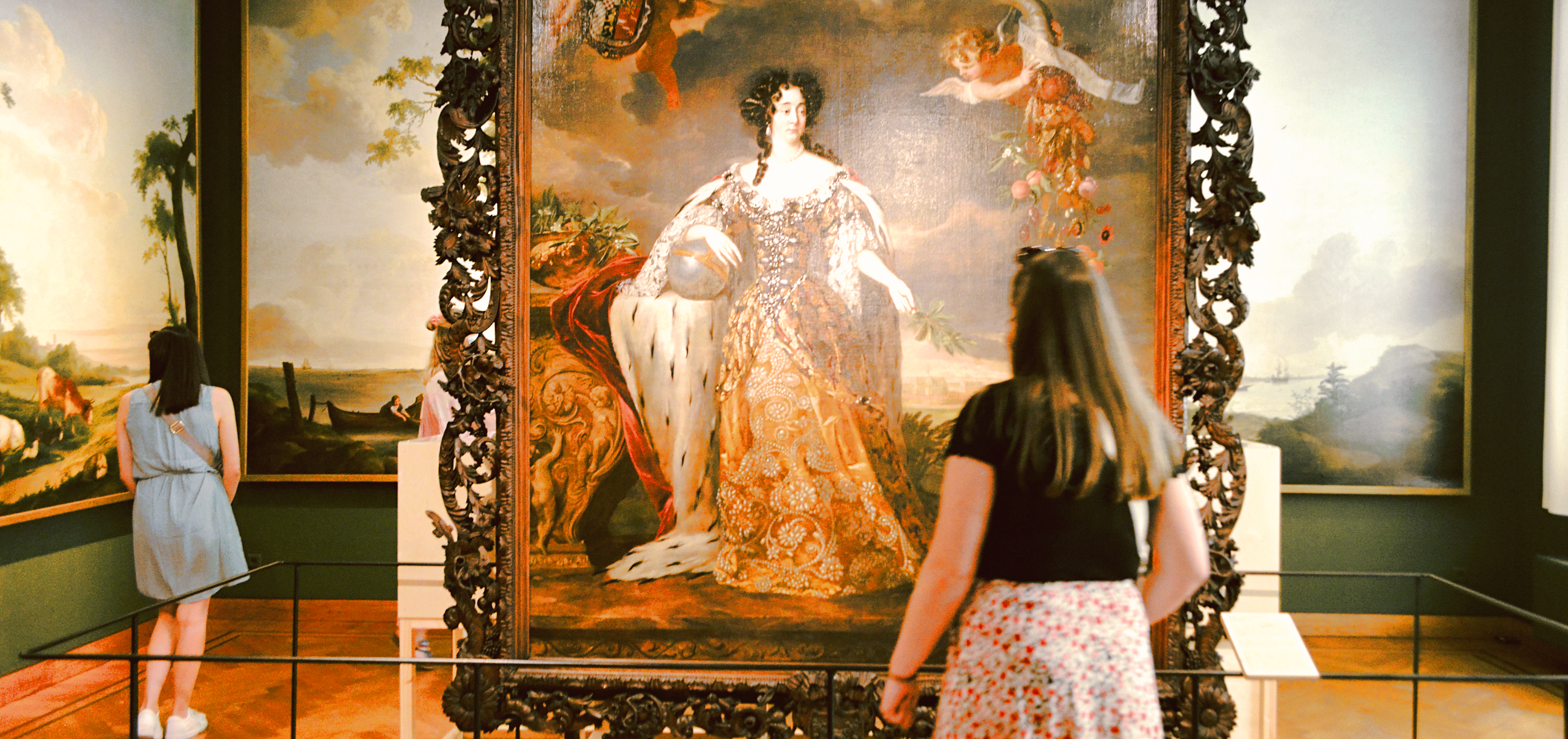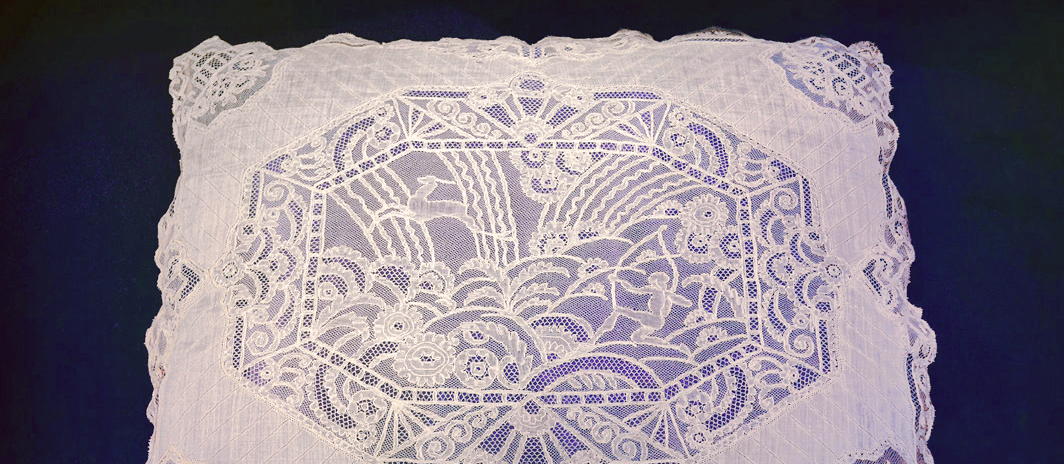Highlights
Lace pillow
(Presumably) Lace-Office A. Verwaest, 1904, ice-ground clattered in cotton
On the 19th of June 1904 princess Elisabeth and prince Albert, later King Albert I, came to Turnhout for the inauguration of the waterworks. The keys with which they opened two fountains in the churchyard at the Grand Place, were presented to them on this pillow. In the pillow there’s a hunting scene in art deco with adornment in open-work.
Cabinet of diligence with 'besloten hofje' (private or closed patio)
Jozef Jansen (design), Jules Taeymans (furniture design), Louis Borghs (cabinet), Sisters of Saint Clare Turnhout, Adeline Boone (paintings), 1937-1943, diverse materials
Canon Jozef Jansen made this design as a homage to the “Immaculate Conception”. The Sisters of Saint Clara were working at it for five years. On the left side panel one can see the legend of the Holy Mary of the Theobaldus Chapel during the Battle of Turnhout in 1789: while worshippers were praying in the chapel for a good outcome of the fight, they suddenly noticed that the statue of Mary had disappeared. It seemed that Mary had left the chapel to join with the patriots and catch the cannonballs in her cape. When the statue returned, three wear marks bore witness to the battle.
Between the lace bobbins, little wax statues, embroideries, relics and devotional pictures, there’s a wooden crucifix with silver trimming. Presumably it belonged to brother Van Hilgen, a Franciscan friar who was murdered by French riders in the Grimstedestraat, Turnhout during the Peasant’s War in 1789.
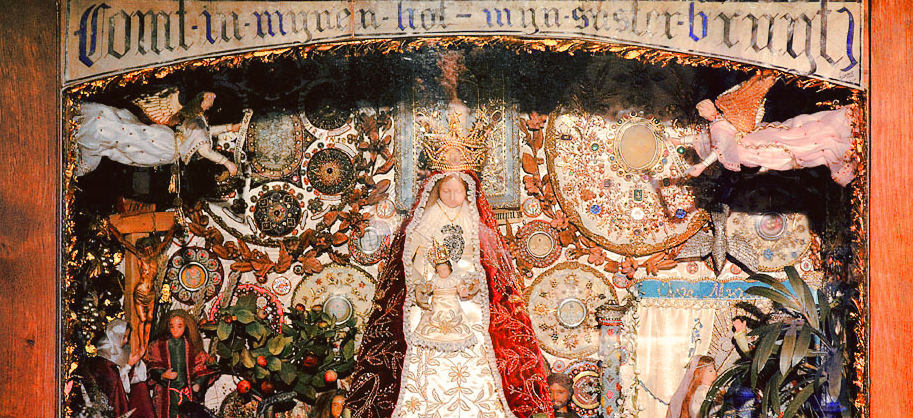
Archives chest
Anonymous, 15th century, oak and iron
Also called “comme”. In this rough chest with heavy iron strips and one lock, important documents were kept. This chest came from the ancient city-hall and was a precursor of the “privilege closet” from 1651.
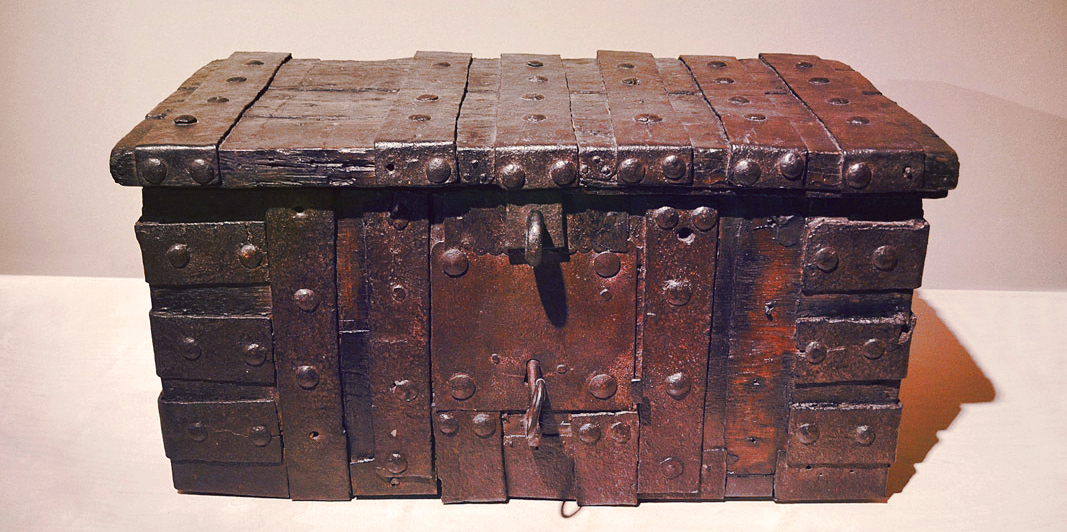
The treasure of Turnhout
Anonymous, 1575-1600, gold
On the 16th of June 1891 a mason found a pot during renovation works in the house “Het bruin peerd”(the brown horse) at the southern side of the Grand Place, between the Herentalsstraat and the Otterstraat. The pot contained 76 golden coins, minted between 1543 and the last quarter of the 16th century. Probably it was the penny bank of a rich Turnhout tradesman, who had earned those foreign coins by international trade in cloth, linen or ticking. Presumably he had hidden his treasure in the ground about the 24th of January 1897, when the State troops under the leadership of the Dutch prince Maurits overran Turnhout in order to defeat the Spanish occupation army on the Tielenheide.
In 2005 the city of Turnhout was able to buy 32 of these golden coins with the support of “the Friends of the Taxandria museum”.
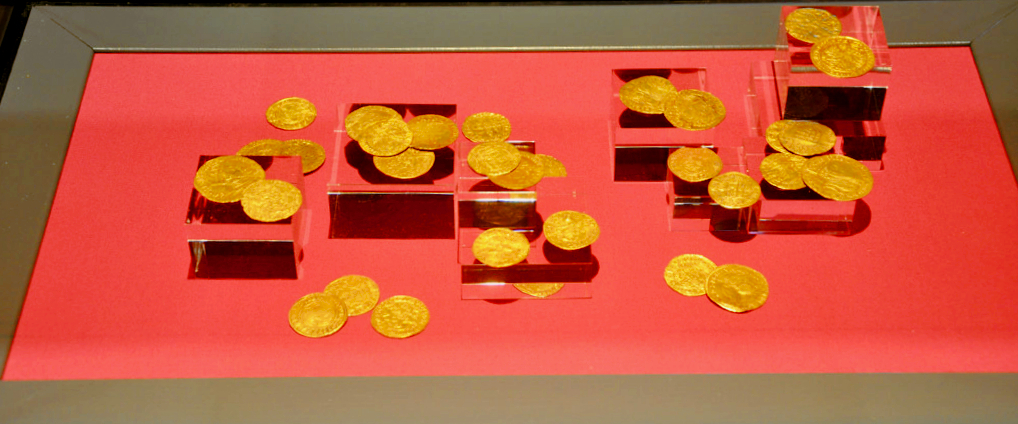
Hunting door
Door of “Het Valkhof en het Consistorie van den Hoorn”
Adriaan en Jacob Smolderen, 1665, oil painting on iron, copper
From the 15th century, in the ancient city-hall of Turnhout there were two hunting-law courts where disputes were being arranged. Before the “Valkhof” (falcon court) cases concerning the shooting with falcons on flying game were treated, or the cases called “feather on feather”. The “Consistorie van den Hoorn” (Consistory of the Horn) treated the hunting with bloodhounds on ground-game, or the cases called “hair on hair”.
Both ways of hunting are depicted on this door. In 1648 one tried to remove the hunting-law court to Brussels, but the Turnhout corporation , supported by the Lords of Turnhout, resisted. Both courts remained in service till the end of the Ancien Régime (1789).
At the beginning of 2014, after being cleaned and freed from the varnish, the polychrome painted wooden door of the Falcon Court and the Consistory of the Horn from the 17th century got back its original lambency. Again the tableau is clearly visible.
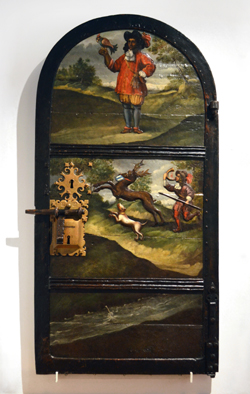
Mary of Simmern (Mary of Orange-Nassau)
Daniël Mytens the Younger, ca. 1680, oil painting on canvas
Framework by Jan Cosyns, 1682-1683, oak
Mary of Nassau (1642-1688) was the youngest daughter of Amalia of Solms. In 1673 she was given in marriage to Louis Henry, count palatine of Simmern. She became Lady of Turnhout in 1676 and favoured the convent of the Saint-Sepulchre in particular. The first postal service in Turnhout was all along of her. At the castle she possessed a lot of “artful” paintings, among them a work of Pieter Paul Rubens, whose youngest son died in Turnhout.
This portrait was painted about 1680 by the Hague’s court painter Daniël Mytens the Younger (1644-1688). At that moment there were still two churches in the Turnhout beguinage. The heavy rococo frame was made by the Antwerp sculptor Jan Cosyns (+ca. 1728).
There’s plenty of symbolism in this picture. Secular leaders are depicted arisen. The ermine cape is an indication of wealth, power and chastity. The globe refers to the territory over which Mary of Simmern reigned. She was a princess of Orange, but also governed in German territories. The laurel branch stands for victory. Two angels in the left corner carry her coat-of-arms, and the angel on the right brings the horn of plenty. On the ribbon around the horn one can see the epigraph “Ick wensch u noch meer” (I wish you even more). Indeed, Mary of Simmern reigned over Turnhout after a long period of war.
